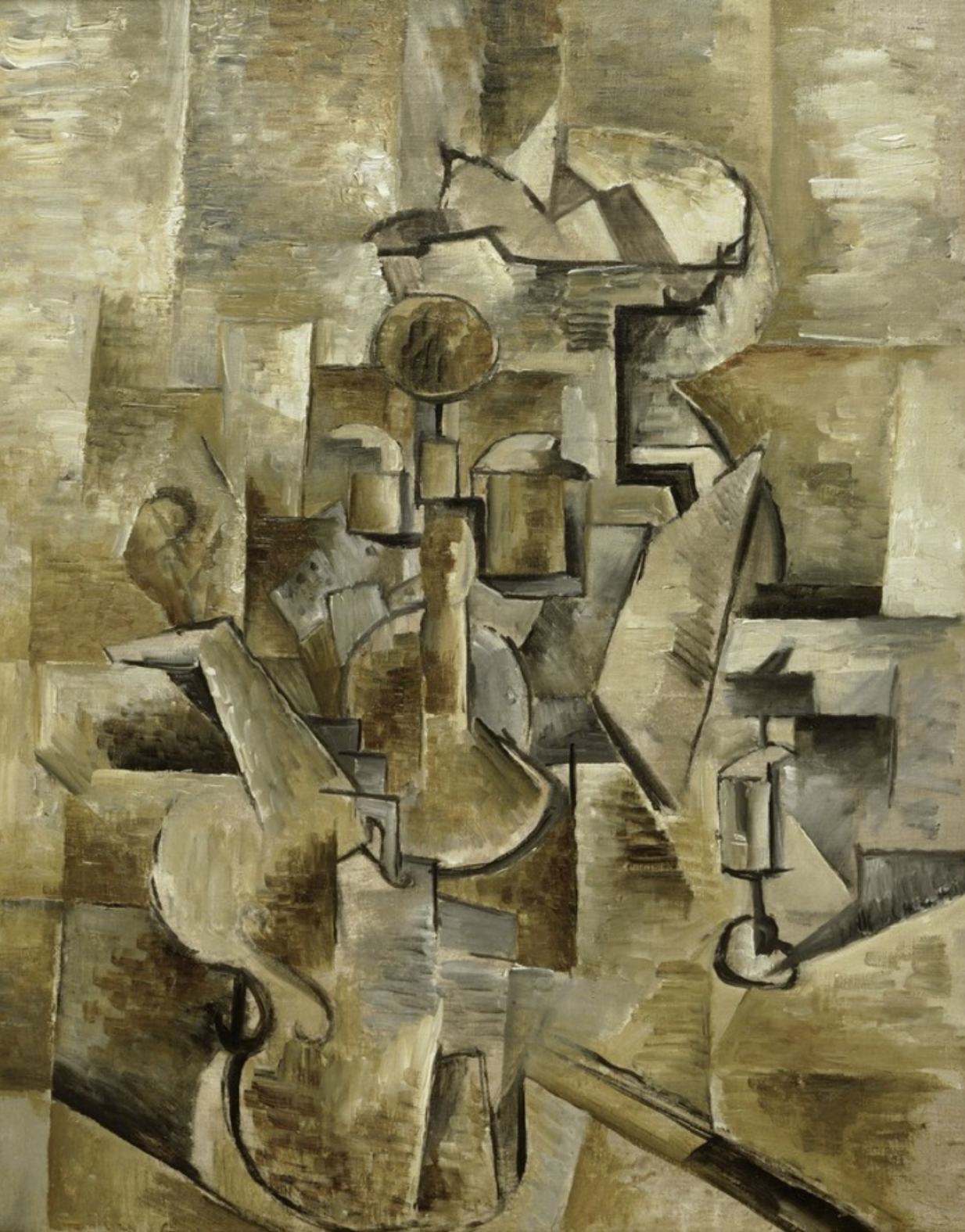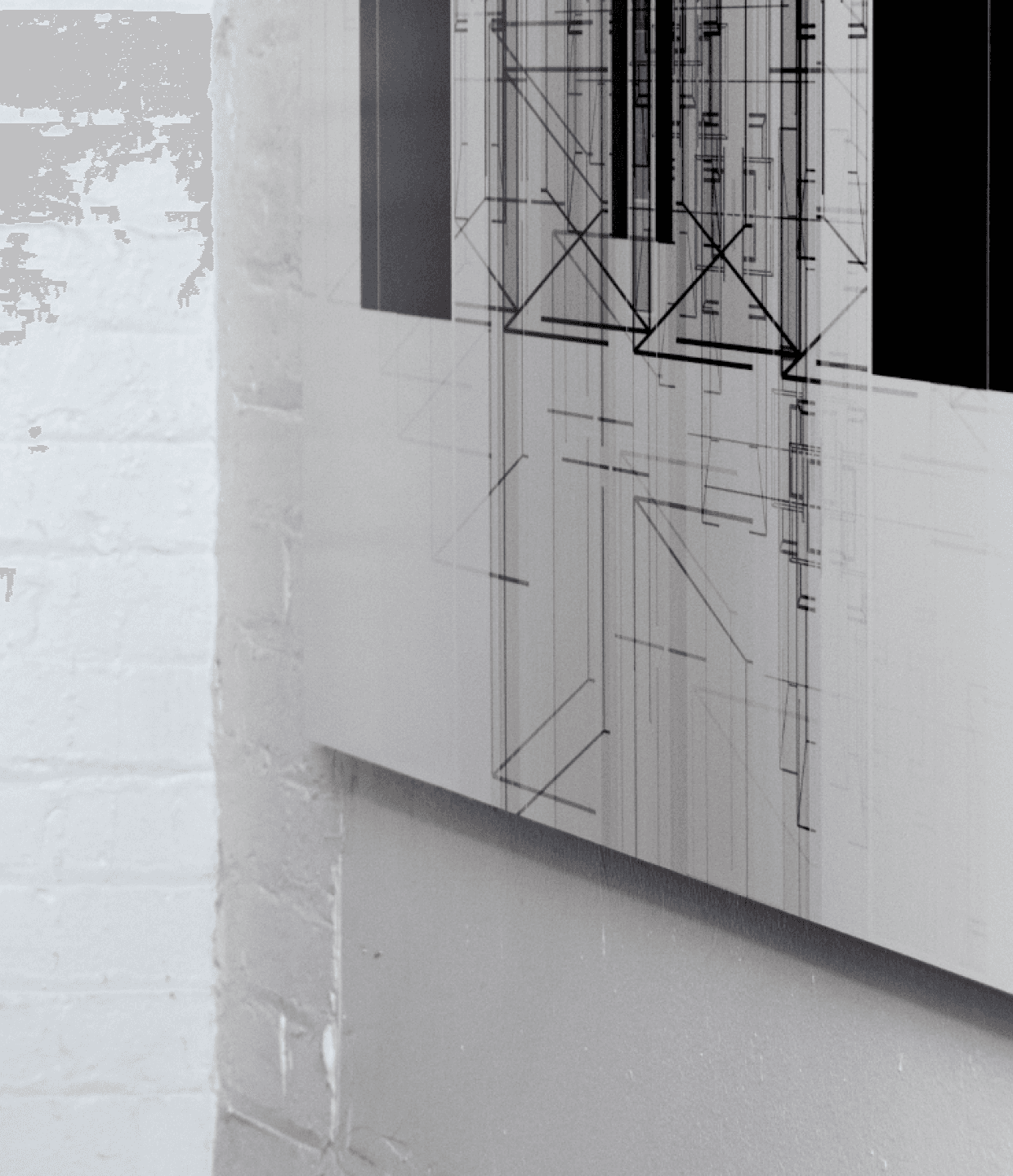The Sound of Color in Chromesthesia: Ascend and Interference

Artists like Jaime Derringer and Phaust continue to be fascinated by art that explores our perception of sound.
Sound and music are intimately connected to the development of abstract art in the early 20th century. Artists Georges Braque and Pablo Picasso famously depicted musical instruments in early cubist works, evoking the sounds they produce with human intervention through flattened depictions of the instruments themselves — and occasionally, sheet music.

Pablo Picasso, Musical Instruments on a Table (Instruments de musique sur un guéridon), 1915

Georges Braque, Violin and Candlestick, 1910
Russian painter Wassily Kandinsky played with the connections between sound and art throughout his career. When he heard sounds, he saw color. When he saw colour, he heard music. This is a condition known as synesthesia — Kandinsky’s paintings are a reflection of exactly what he saw when he heard sound.
For Kandinsky, music was the most transcendent form of non-objective art, as musicians create images in a listener’s mind with sounds. He also employed musical naming conventions for his geometric abstract works, whose colors he viewed as closely related to music notes.

Composition X, Wassily Kandinsky, 1939
Artists continue to be inspired by or try to recreate music or sound in their creative expression, including two Tonic artists, Jaime Derringer and Phaust.
The Sound of Color in Chromesthesia: Ascend
Chromesthesia: Ascend, our inaugral Tonic series, explores the visualization of sound and color. In this body of work, Derringer investigates the phenomenon of experiencing colors in response to certain sounds or other stimuli known as synesthesia.

Chromesthesia: Ascend #0 by Jaime Derringer
Derringer has repeatedly digitally manipulated and distorted her own original artworks using a combination of phone applications, computer software, and AI. Each successive group of works cannibalizes what came before it and is reborn in the wreckage. The final pieces for Chromesthesia: Ascend is further deconstructed and ultimately reconstructed with a MIDI controller, a device typically used to control or play music.
The algorithmic code for Chromesthesia: Ascend mimics the act of turning each knob of the device to distort a section or characteristic of the image. She employs vibrant and contrasting hues to create a sense of movement, energy, and emotion. Each tempo — Prestissimo, Moderato, and Largo — evokes a different blend of colors within the work, further evoking the feeling of seeing sound.
Using Chladni Patterns to Visualize Sound in Interference
Interference by Phaust explores the shape of sound through Chladni patterns, resulting in playful and aesthetically pleasing compositions underscored by mathematical and historical depth.
In 1787, Ernst Chladni took a violin bow and drew it against a metal plate lightly covered with sand. When the plate reached resonance, the sand settled on particular nodal lines, leaving what is known as Chladni patterns. Chladni made it possible to see sound, as the patterns changed for different tones and other factors. Chladni’s work, and the associated mathematical equations produced by Sophie Germain, proved to be important in fields as diverse as acoustics and instrument design to quantum mechanics and electron orbitals.

Ernst Chladni's patterns
Phaust begins with the patterns from Chladni’s initial experiments, adding depth and complexity by showing a range of the standing waves crossing Chladni’s plate. Instead of just the nodal lines, he maps polar coordinates in addition to standard cartesian coordinates. This coordinate system mapping distance and angle from a reference point creates a distinctive tapered aesthetic in contrast to the rounded shapes of the cartesian mapping.
However, many of the works in the series offer a glimpse at the traditional patterns, such as #96 and #159.

Interference #96 by Phaust

Interference #159 by Phaust
Art collectors and critics continue to be fascinated by art that explores our perception of sound.
“Sound is materially invisible but very visceral and emotive,” said Berlin-based artist Susan Philipsz, winner of the Turner Prize in 2010, for her sound installation Lowlands. “It can define a space at the same time as it triggers a memory.”
Learn more about the impact of sound on Chromesthesia: Ascend and Interference and explore the series at tonic.xyz.
More stories

Introducing ESCAPE by Iskra Velitchkova
ESCAPE by Iskra Velitchkova is at once an archive of the artist’s personal history and a self-referential exploration of how we seek freedom and escape in art.

Unique Physicals, Series, ESCAPE
Iskra Velitchkova’s ESCAPE with Silver Gelatin Printing
Iskra Velitchkova’s ESCAPE is influenced by analog photography and leverages silver gelatin to its fullest for its unique physical offering.

Features, Series, Compare & Contrast
Pointilism & Divisionism in Intimità and Interference
The experiments of Divisionist and Pointillist painters influenced our understanding of color and contrast, enabling new forms of artistic impression like the works of Phaust and Stefano Contiero.


Stay in the loop on upcoming drops, exclusive access, and more.